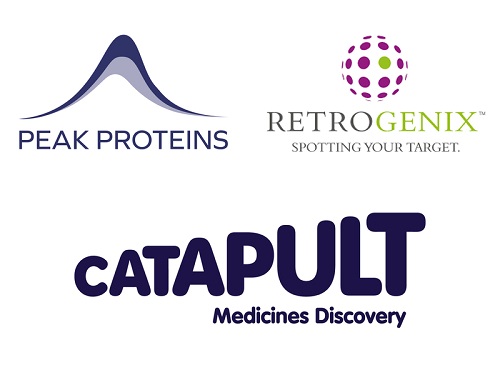New Collaboration to Identify Target Receptors for COVID-19

Medicines Discovery Catapult, Retrogenix and Peak Proteins announce a collaboration to advance understanding of the cellular mechanisms of infection by COVID-19.
This collaboration aims to combine excellence in drug discovery and protein science with innovative cellular microarray technology to uncover any unknown cellular receptors or binding proteins of COVID-19. Identification of such receptors could provide the basis for new therapeutic approaches to counter the current global coronavirus pandemic and may guide drug repurposing efforts.
Jo Soden, Co-founder and Director at Retrogenix, said:
“By screening against our unique library of human cell surface proteins, Retrogenix has previously been highly successful in identifying viral receptors. Using the same technology, we now have the perfect opportunity to search for new receptors for COVID-19.
A positive find could have significant consequences in the search for treatments.”
Mark Abbott, CEO Peak Proteins, added:
“The ability to rapidly produce and provide high quality COVID-19 proteins for use in key research activities has been really important to us. We are delighted to provide our protein production expertise and generate the tailored protein reagents needed for this project.
Our focus has been on keeping our labs open, while ensuring the safety of the staff, and this seems all the more worthwhile when we are able to contribute to understanding how COVID-19 infects cells, and in the development of new approaches to target the virus.”
Peter Simpson, CSO of Medicines Discovery Catapult, commented:
“It is heartening to see the scientific and technical expertise of our three skilled organisations coming rapidly together to respond to this global health crisis.
Medicines Discovery Catapult has already established the Alderley Park Lighthouse Lab for large scale COVID-19 diagnostic testing, and we are delighted to now provide scientific expertise for this collaborative project that will enhance understanding of COVID-19 and support the global challenge to find therapeutic opportunities.”
























